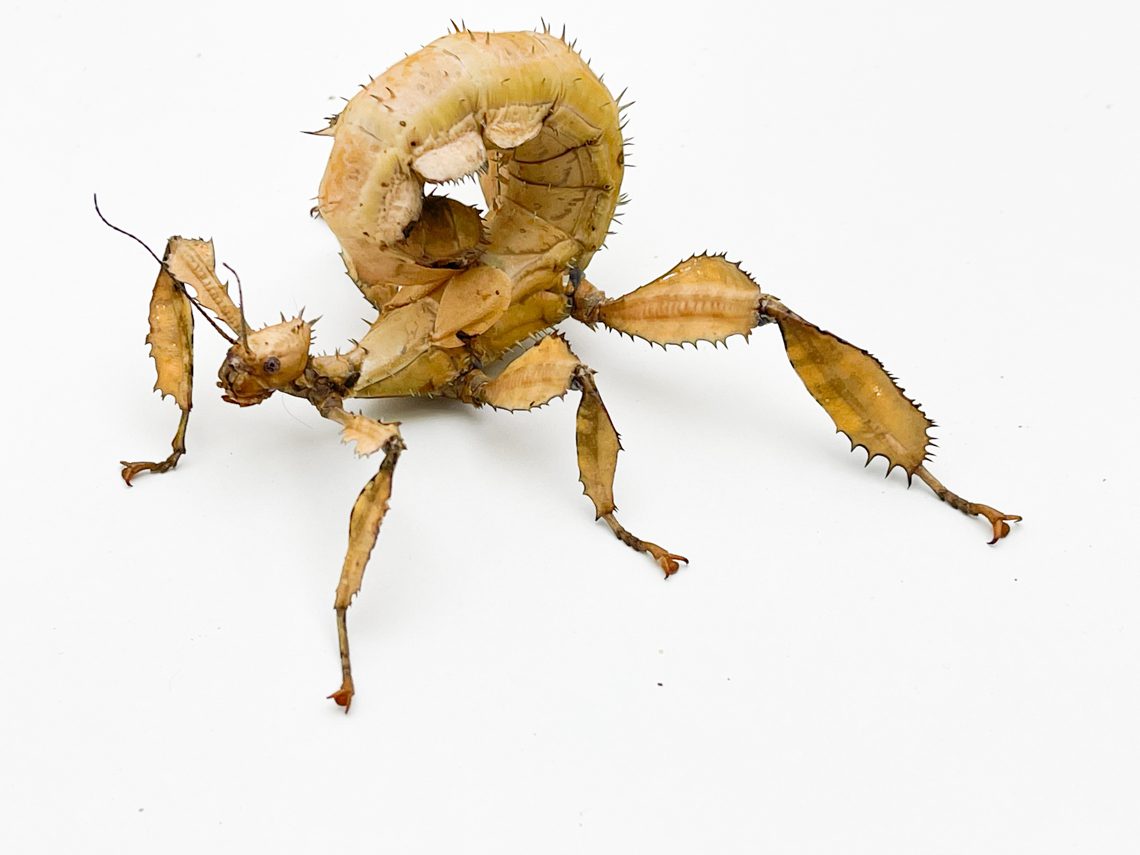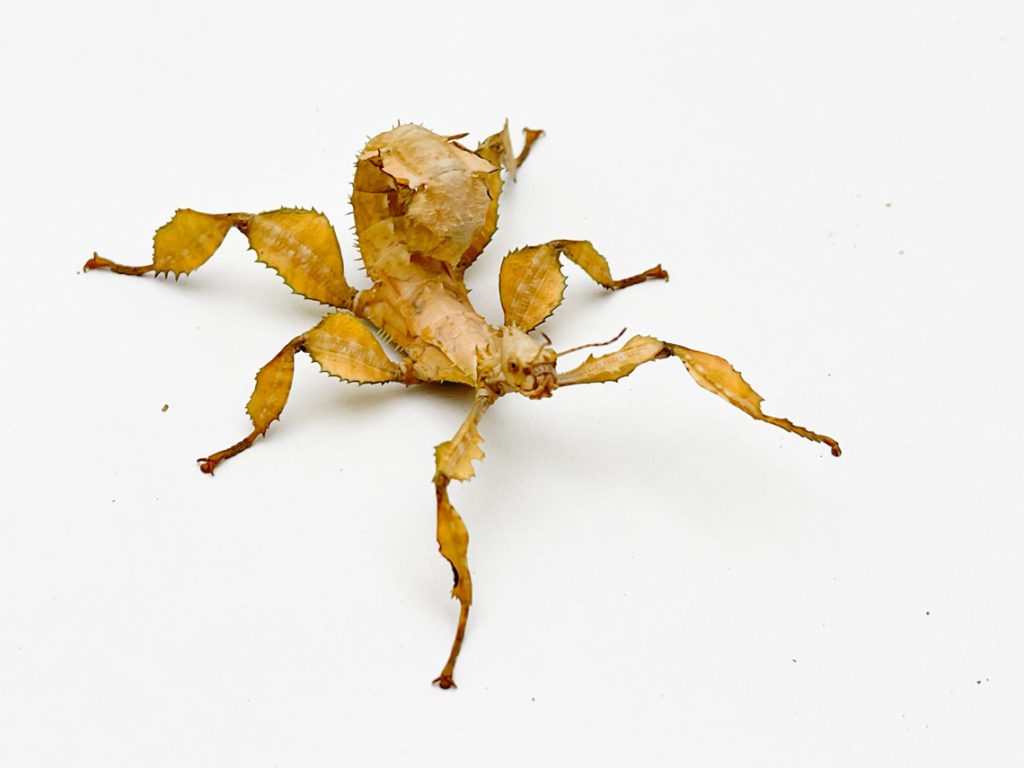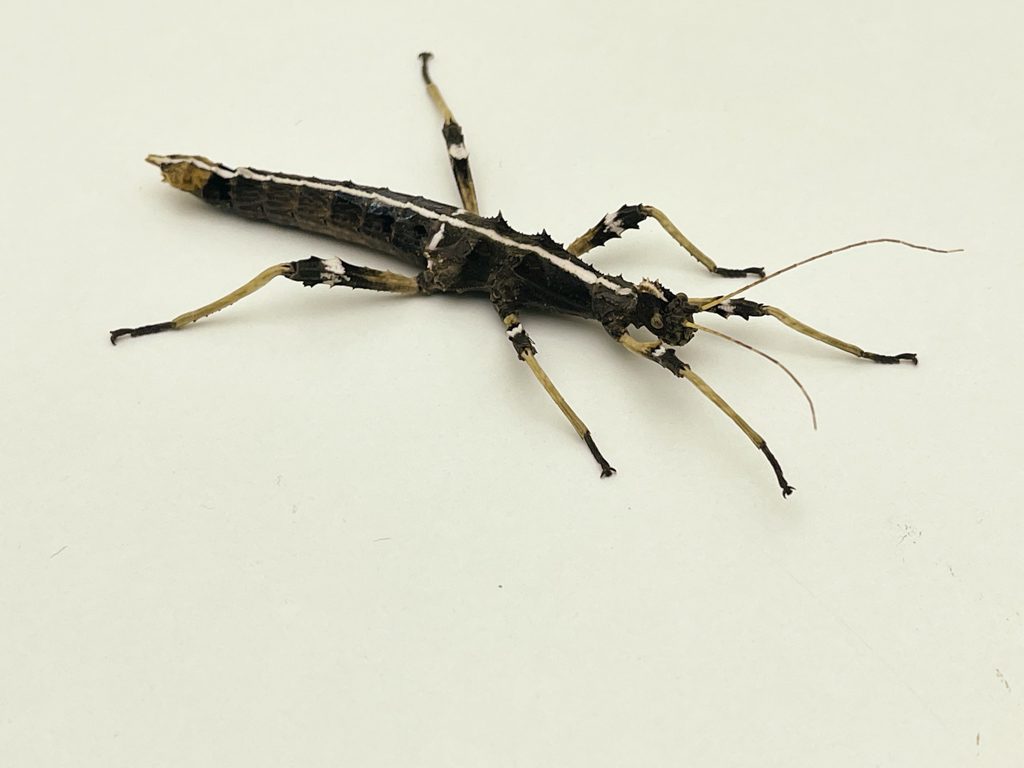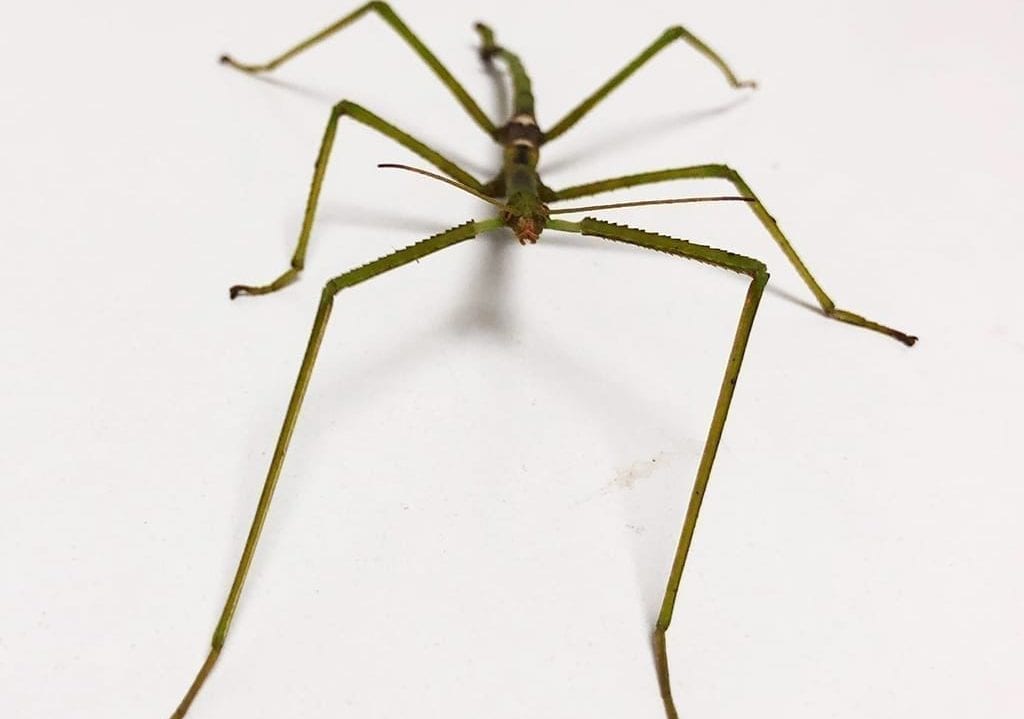
Stick Insect
Care Sheet

There are many species of stick insect across the world. The most common types which we stock are: Maclays or Giant Prickly Stick Insects originating is Australia, Indian Stick insects which are long and thin and sunny stick insects which are mostly black with spots of white which are from The Philippines.
Stick insects eat leaves of different plants depending on the type. Most of the ones we stock will eat bramble which can be found in local woodland areas. Some will eat privet which can also be found growing wild. You will be able to tell which one as the one they don’t like will be completely untouched by them. Please ask us if you need to know which your stick insect eats.
Stick insects are great at camouflaging to the leaves and plants which they eat in the wild.


HANDLING YOUR STICK INSECT
Always wash your hands before handling your stick insect just in case you have any chemicals which may harm them remaining on your skin.
Stick insects should be picked up from beneath, using one hand place the hand under to scoop the insect, you can gently encourage by lightly touching the back legs with the other hand and the insect will crawl on to you. Some stick insects such as the Maclays have spikes on their bodies. These help them to camouflage into the bramble that they eat and also help to discourage predators. They can be quite hard when adults so be careful not to grab them.
Always handle your stick insect gently and never grab it in the palm of your hand. Try not to pick them up from above as this is where their predators would come from in the wild.


SEXING YOUR STICK INSECT
All species of stick insect look different depending on where they are from.Female stick insects, like many female reptiles and amphibians, are generally the larger of the sexes.
Males are often more stick like with females being larger bodied. Some males will have wings, Maclays stick insect males have wings and are able to float when moving around in the forest. (See image, Male left, Female right).
If deciding to breed stick insects, it is important to know that females can perform parthenogenesis meaning they can reproduce solely without a mate. Even more interestingly, babies made by a single female will be 100% females, babies produced from a male and female pair of stick insects will be 50% male and 50% female.


HEALTH CHECK
Ill health in stick insects can easily be seen by the appetite of the animal. A healthy stick insect will be alert, will drink when sprayed and will eat daily.An ill stick insect will be easy to see, its body will be limp, it may have shed stuck on it, it may be sat at the bottom of the enclosure– quite often the key is hydration. If you notice that your stick insect is spending a lot of time at the bottom, add a few more sprays a day.
Keep food in a vase or bottle with water in so that the food constantly has fresh water, this will also aid in keeping the stick insects hydrated. Provide fresh leaves every few days, as soon as leaf runs out or if the leaves are starting to sag and go brown. Stick insect enjoy fresh leaves.
If you notice that your stick insect is trying to shed, ensure that you do not touch it. Leave it alone until the shed is finished. Sometimes disturbing them can cause them to lose limbs during the shedding process. Ensure stick insects are sprayed regularly– this will help them shed correctly.
Accidents happen, sometimes your stick insect may have an accident and lose part of its leg. These generally grow back over time.








ADVICE FOR LIFE!
When you buy your Pet & Housing from us!
Priority Boarding | Advice available face to face, via Telephone, Facebook Chat, Email, Instagram



